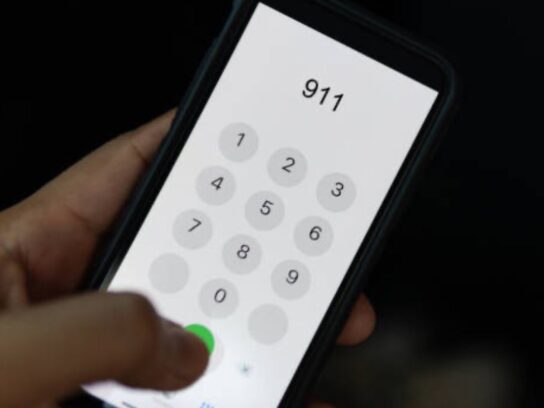
The county’s 911 call center is considering using artificial intelligence to help handle non-emergency calls.
“We’re in the process of determining which service would best serve Montgomery County,” Emergency Communications Center Director Jennifer Reidy-Hall said during a council committee meeting Monday. “And with funding from the 911 board, we plan to implement this technology in the next year.”
Waiting for 911
Non-emergency calls make up 40-50% of calls, according to Reidy-Hall.
Council Analyst Susan Farag noted that the Council periodically gets complaints about not getting an answer when calling 911 or being put on hold for “what feels like a really extended period of time.”
ECC answers 75-85% of all calls within 15 seconds. About 13-23% of calls are answered after waiting 20 seconds or more. There could be a 35-second answer delay between 4-5 p.m.
The percentage of calls going into an automated queue increased from 15% in fiscal year 2022 to 24% in FY24, according to Council documents. The average time on hold also increased from seven seconds to 11 seconds.
Understaffing
ECC has been “deeply stressed by understaffing” for several years, according to the Council analyst. There has been some progress, according to Council documents, with the overall vacancy rate for call takers and dispatchers going from almost 41% in FY24 to under 14% in FY26.
There are 25 current trainees and 19 vacancies remaining, Reidy-Hall said. The department anticipates being fully staffed by July 2026, and wait times should go down significantly then.
Could AI Help?
Among other efforts to improve answer times, Reidy-Hall is looking into using AI to offload the burden of non-emergency calls.
“We hope that this, paired with increased staffing and implementing more efficient schedules for our specialists, will move us closer to the goal of being able to answer 911 calls with zero wait time,” she said.
She said several vendors now offer technology that uses AI to screen non-emergency calls and answer questions or reroute calls. Other 911 centers have secured funding for vendors to come in and implement the technology, where a person talks to AI, and gets rerouted to a call taker, or the public information office or another division.
Single Incident Response
Councilmember Sidney Katz, Chair of the council’s Public Safety Committee, wondered if AI could help in a situation where there is an influx of calls about one incident, like an emergency on the highway.
“That’s what we’re all exploring right now, it’s sort of uncharted territory,” Reidy-Hall said.
“What we can see is where the calls are coming in, so you can see if you have a bunch of calls coming in at that area on 270, those are likely related to that call, but the one that’s five miles away might be something very different. So we’re looking at how we can use AI to cherry-pick those calls that are not related to that.”
AI can also tell callers a significant incident at the location has already been entered and can ask callers if they have additional information.


Comments are closed.